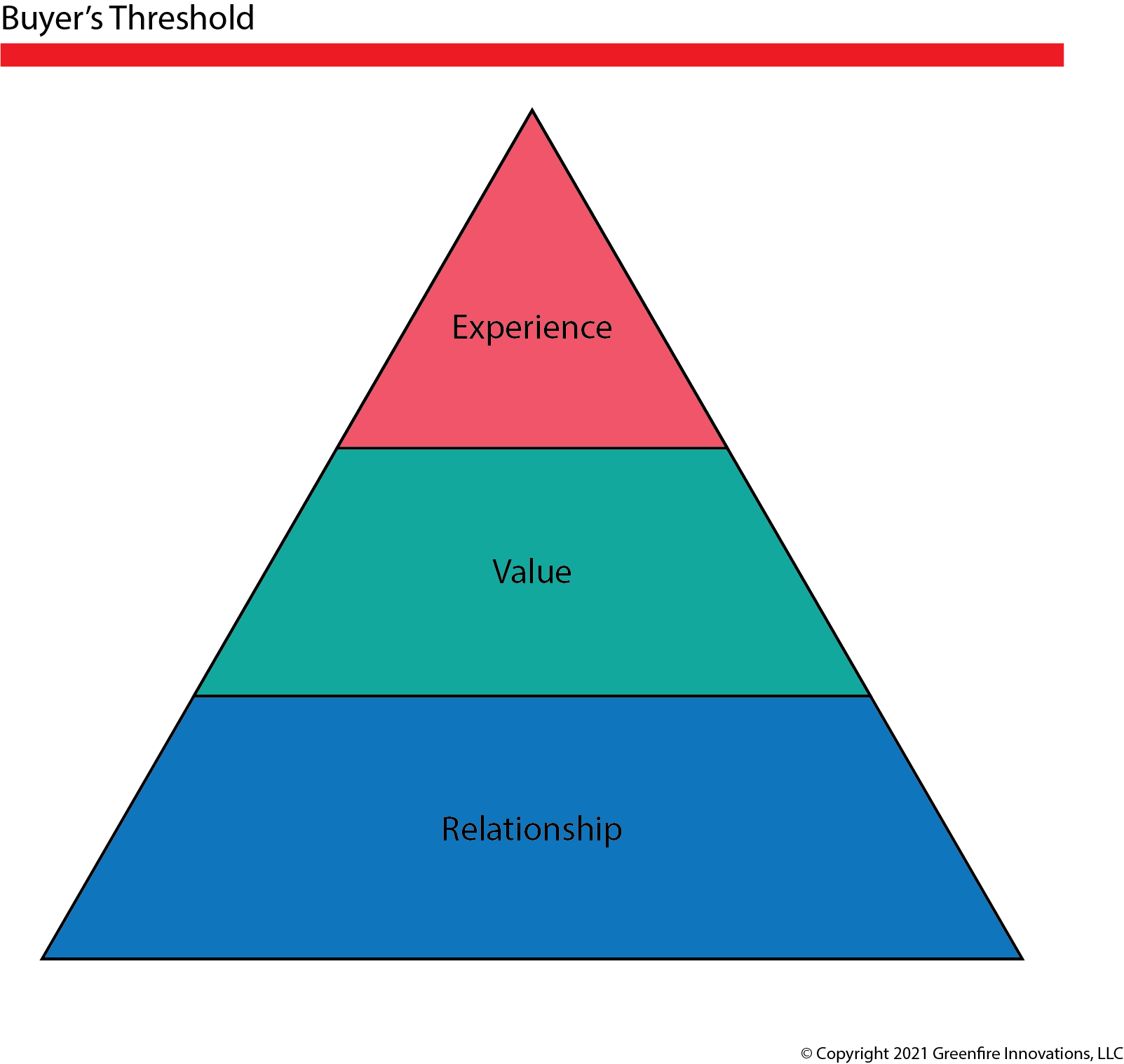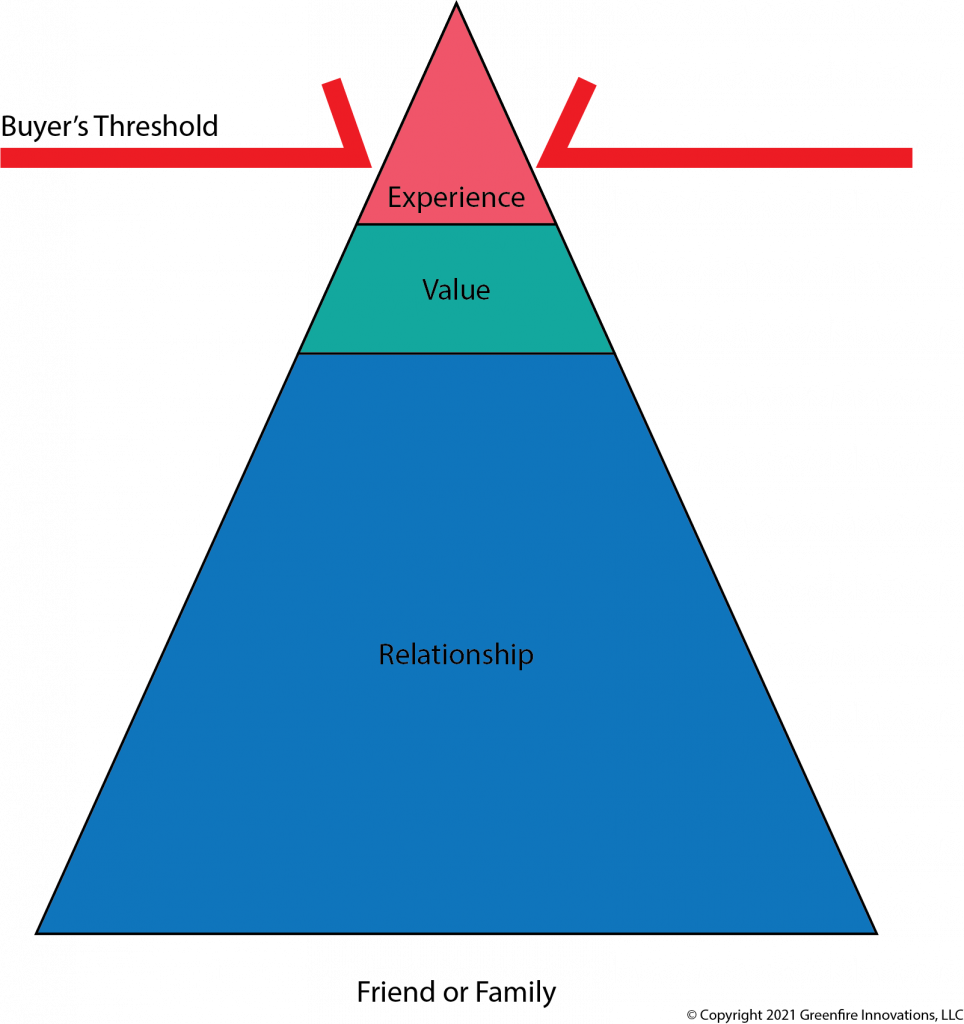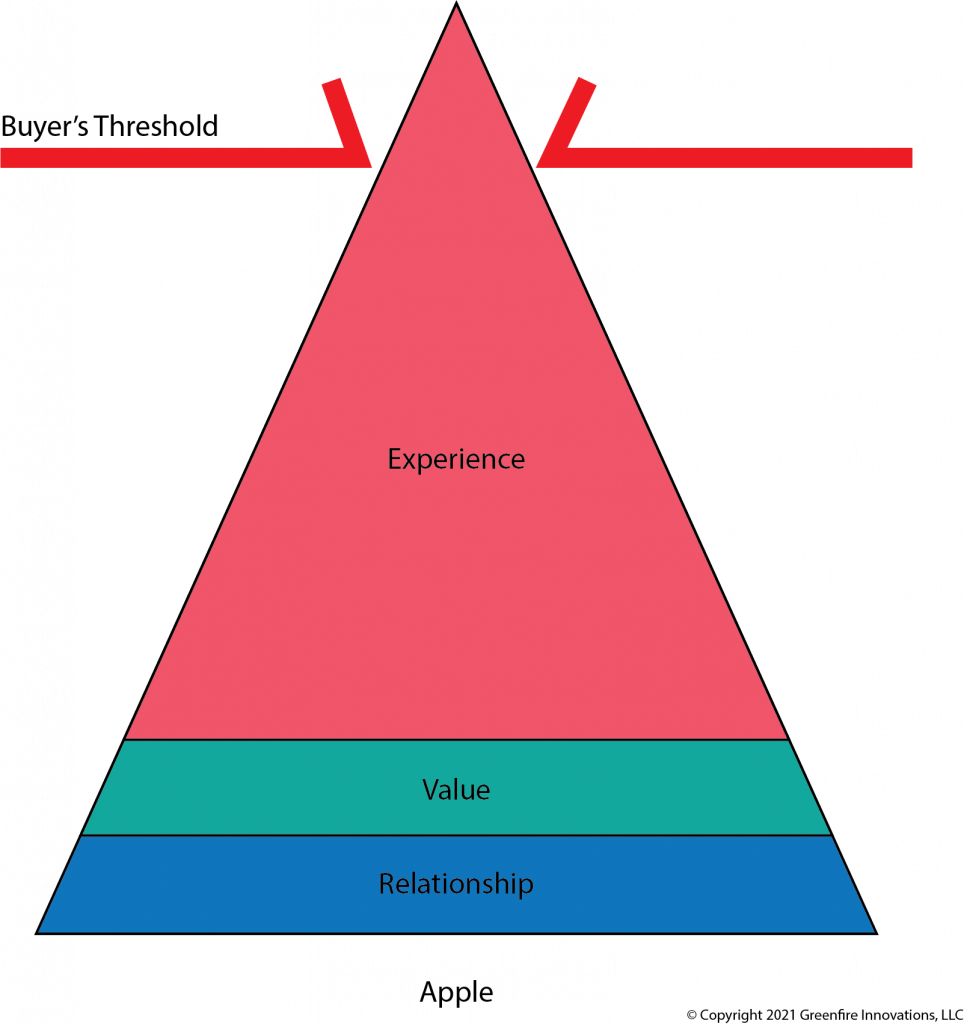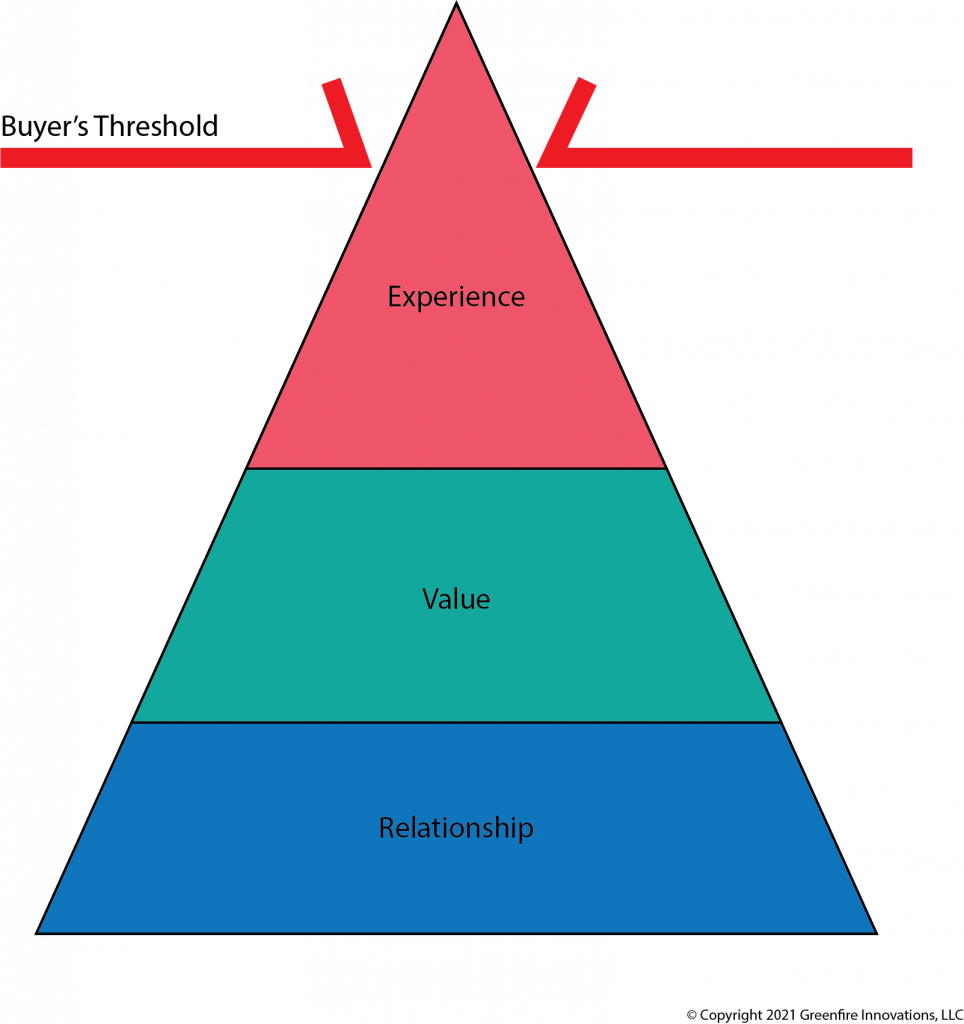There are many conversations in sales surrounding what actually pushes the prospect over the edge to become a client. Most of these point to benefit or value. However, what I have found is that value is only one piece of the puzzle. There are really three contributing factors to breaking the Buyers’ Threshold. Any one of these could potentially be enough alone to tip the scales, but usually, it is a combination of all three.
The first factor is the relationship. Getting prospects to like and trust you is part of relationship-based sales. In some cases, the salesperson may be the only factor needed to make the sale. I have people I work with simply because I know, like, and trust them. It does not matter if someone else can beat their prices or has a slightly better product; I’m going to do business with them because of who they are to me. More often, however, this is not enough to get the sale all by itself. And sometimes there is no salesperson (e-commerce for example).
The next tier is the value, which I define as ROI (return on investment). This is the financial or numerical component of the decision. While it is related to pricing, it is not price. (Perceived) value is all about, “Am I getting something worth as much or more than what I’m giving up?” That may be money or time, but either way, is the solution/product/service surpassing the “cost” of the money or time traded? The bigger the ratio of value to cost, the better the ROI, and the greater the chance of converting the prospect.
Finally, there is the experience. Not only does this encompass the ease and pleasantness of the transaction, but it includes the emotional component as well. How do they feel about the purchase? How enjoyable was the process? How badly do they want what you are offering? It’s all about emotion and intangibles.

Let me break down some examples:

I have purchased an online course for $10 when I didn’t know the creator or the benefits. I believed that I would be able to extract some learning from the course that would make its ROI more than $10. Here, it was all ROI (high perceived value with low price point) that broke the Buyers’ Threshold for me. I didn’t need the course. There was very little “emotional” benefit.
I did not buy a coaching program at $8000 for the opposite reason. The perceived value did not overcome the high price point despite my knowledge of the coach. There was a definite benefit, but not enough to break the Threshold.
When the same coach offered a scaled-back program a few months later for $2000, I saw enough benefit plus I knew, liked, and trusted the coach. In addition, if the program helped me gain one client, it would pay for itself several times over (ROI).
Another coach I follow, possibly more well-known, could have offered the same program for far less of a price point, and I would not have bought it. My prior experience with him demonstrated to me that he does not always practice what he preaches. Here the experience was too low to break the Threshold.


Obviously, there are dozens of scenarios for any given product or service, and as salespeople, we do not always know what the ratio of relationship : value : experience is, much less what it needs to be to break the Buyer’s Threshold. So, we need to work on all three levels. It is important to build rapport & strengthen relationships WHILE demonstrating value & return on investment WHILE appealing to the emotional & experiential side of the (emotion-based) human being we call a prospect. At any time, any one of those could finally pierce the threshold propelling the person from prospect to client.

